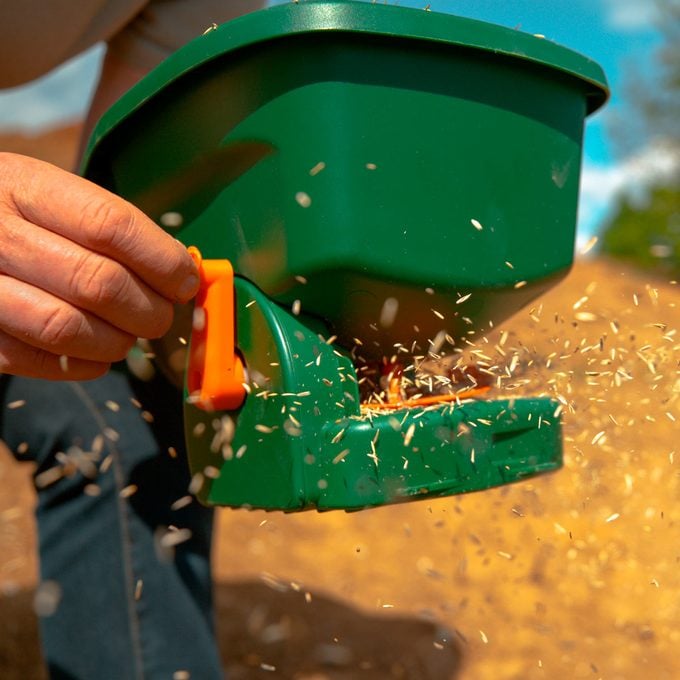No matter where you live in the U.S., learn why fall is the best time to reseed your lawn and how to do it.
Why Fall Is the Best Time to Reseed Your Lawn

Left alone, grass has no problem providing its own seed and replenishing itself. A manicured lawn often can’t because repeated mowing chops off most, if not all, of the seeds before they mature. That’s why reseeding your lawn from time to time is important, especially if it gets a lot of wear and tear. Planting fall grass seed is one trick.
When You Should Reseed Your Lawn
Geography determines the best time to reseed your lawn. Here’s why fall is the best time for reseeding lawn in the North:
- That’s when grass normally matures its own crop of seeds, if left to its own devices;
- An ideal time would be at least 45 days before the first average fall frost date;
- Unlike spring, the soil is already warmed up, encouraging germination.
Consistent Soil Moisture Is Key
Take advantage of the season, when cooler temperatures and more consistent soil moisture make things less stressful for delicate, newly forming grass blades. Fall rains tend to be gentler than those in spring, allowing the water to soak into the soil where it will do some good. In addition, reseeding in the fall requires less irrigation because the hottest weather will have passed. Weeds and pests are less prevalent, too, lessening competition and stress on new fall grass.
Reseeding Lawns in the South
In the South, seeding a new lawn is generally done in spring, but fall is a good time for overseeding an existing lawn. That’s when cool-season grasses supplant warm-season grasses, ensuring winter color when the former go dormant. Wait until mid to late fall, when nighttime temperatures are consistently below 65 degrees F and the warm-season turf begins to lose color.
Avoid This Mistake
If you are reseeding a lawn, don’t toss seed on bare, hard-packed ground. Most of it won’t take root in such conditions.
Prepare the soil first. Use a heavy-tine garden rake to remove thatch and scratch the surface of the soil deeply to make germination easier. Sow the seed and use a roller to press seed into contact with the soil, then cover lightly with a dusting of peat moss or screened compost.



















